Scientists have studied animal migration for hundreds of years. It’s a fascinating phenomenon that showcases animal’s ability to travel great distances across the planet, as they search for better conditions to breed, survive, and eat. They’re similar to humans who escape winter in search of warmer conditions and more sunlight. Some animal migration journeys are more fascinating than others. We’re going to dive into several animals that embark on fascinating journeys that showcase their resilience.
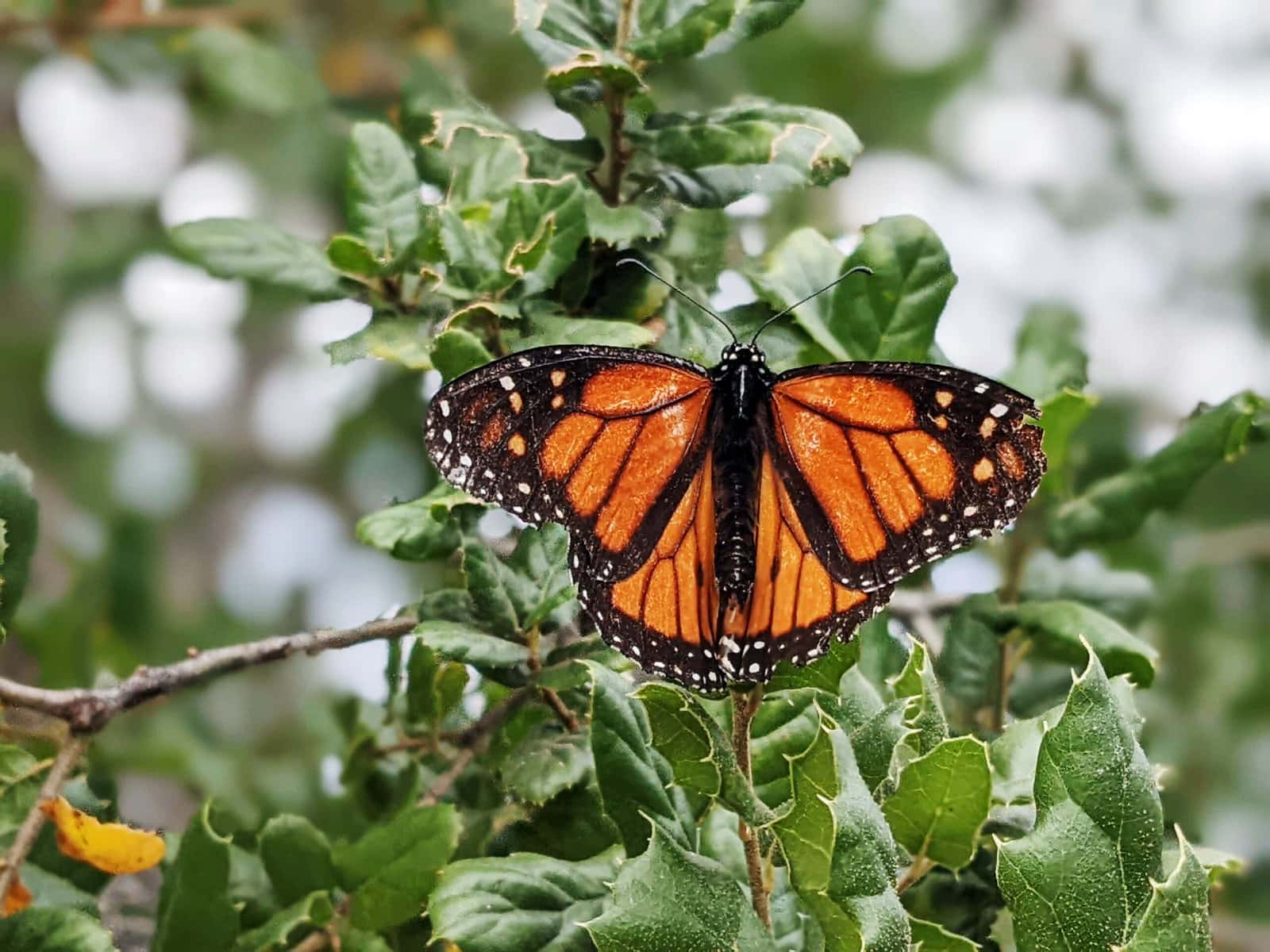
The Monarch Butterfly
Birds and mammals aren’t the only animals to migrate. Native to North America, the Monarch Butterfly migrates thousands of miles, despite their fragility. They begin in Canada and the eastern USA, where millions of Monarchs then migrate south towards Mexico. They cannot survive the harsh winters in North America. This journey alone stretches across 3,000 miles, where they must navigate challenging weather like heavy rain and harsh sunlight, and cross mountains and other ecosystems before arriving in the Oyamel fir forest in Mexico, where they then rest nearly two miles above sea level.
Scientists discovered that Monarchs use a combination of sun compass orientation and a time-compensated sun compass, which allows them to maintain a consistent direction during their long journey across the continent. Tens of thousands of monarchs can gather on a single tree. During a recent interview, scientists expressed how the migration pattern is changing. They said it’s because of “an overplanting of non-native milkweed. It attracts the butterflies to stay and play. But what skipping migration means for the future of the species still isn’t clear. So scientists are relying on some citizen science to help find answers.” They want people in southern Georgia to keep an eye out for monarchs and to see what they’re doing (NPR).

The Arctic Tern
In terms of distance, the Arctic Tern holds the record for having the longest migration. They cover large distances, after breeding during summertime. Once winter in the Arctic comes around, they fly from one pole to the next. All in all, they cover 27,000 miles, each way. That’s 54,000 miles total! Once winter approaches in the Antarctic, they fly back to the Arctic to experience yet another summer. But their journey is not an easy feat. They fly over the open ocean and have to deal with harsh and changing weather conditions during their journey. To do this journey, they use visual landmarks and geomagnetic information to fly.
In terms of flyer points, the Arctic Tern would be catching flights on planes for free all the time. In its lifespan, the Arctic Tern will fly round trip to the moon a total of three times. They mate with other Arctic Terns for life. While gliding, they’re capable of eating and sleeping and can hover mid-air like hummingbirds can. This helps them gain that mileage during those flights (Quark Expeditions).

Wildebeest
On the African Savannah occurs a massive wildebeest migration. This is when millions of wildebeest, zebras, and other animals traverse the savannah to find new land to graze and eat. During the rainy season, wildebeest give birth to their caves. Then, typically, the migration begins in the Serengeti National Park of Tanzania as the dry season approaches. Like the other animals, they have to battle the elements of weather, predators, and river crossings that they might not survive.
Predators include lions, hyenas, leopards, and cheetahs, who wait for the wildebeest to cross their path. They keep an eye out for the weakest link. Crocodiles also wait to snatch unsuspecting prey. According to Science, “The wildebeest migration is the world’s most massive animal movement: 1.2 million animals cross the savanna in an 1800-kilometer circuit between Kenya and Tanzania as they follow the rains. They consume more than 4500 tons of grass every day and deposit heaps of dung, transforming the landscapes they cross.” Every single process in the ecosystem is affected. The wildebeest migration is one of the “Seven Natural Wonders of the World” because of the migration’s sheer size (Asilia Africa).
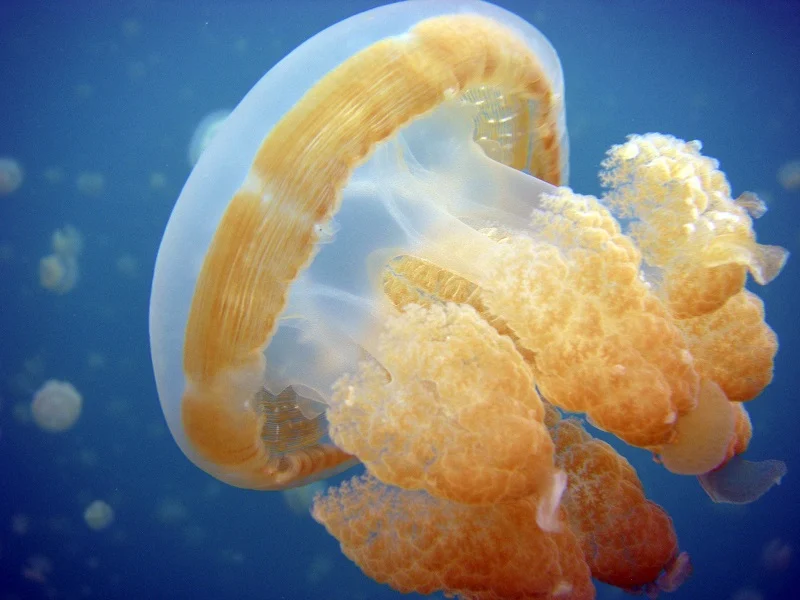
Golden Jellyfish
Even though jellyfish typically float around aimlessly in the ocean, the golden jellyfish in Palau, in the famous Jellyfish Lake, perform not a yearly migration but a daily one. They follow the sun across the sky. Every morning, they collect on the western shore of the lake and move horizontally across the lake as the sun moves across the sky.
Anemones are its predators, and they stop before the shadows where the anemone lurk. They then make the trip back to where they began in the early afternoon. They move by pumping water through their bells, using jet propulsion to make their way across the water. Because sunlight is so plentiful on the island, they rely heavily on it. The sunlight nourishes their tissues (National Geographic).
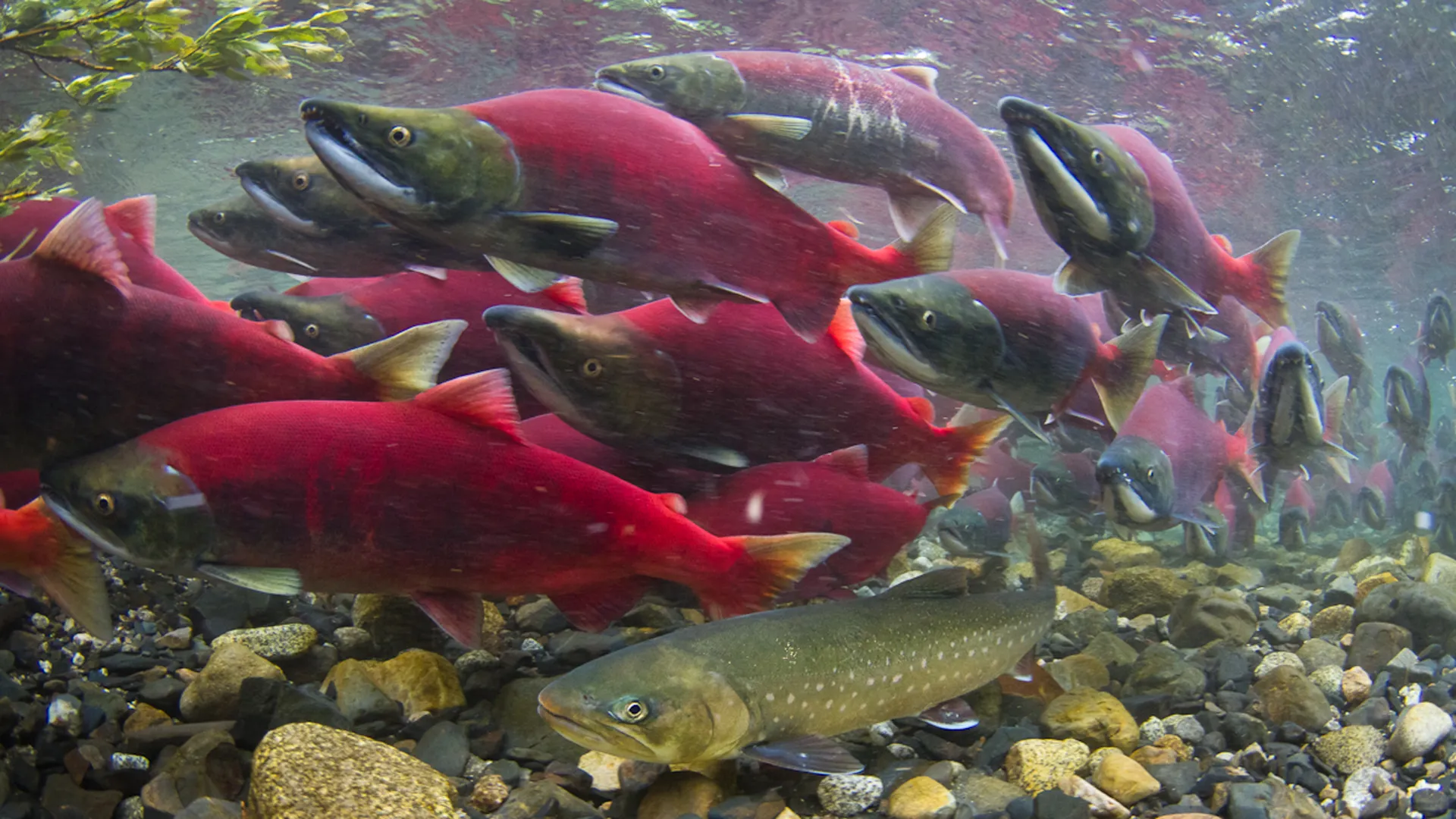
The Pacific Salmon
We’ve seen land animals migrate, we’ve seen birds migrate, but what about all the fish in the sea? The Pacific salmon experience a migration that spans across saltwater and freshwater environments. This is important for the salmon’s lifecycle, as they return to their natal rivers to continue mating for their species. They’ll begin in Washington, Oregon, and California, and migrate to the Pacific Ocean.
Salmon hatch from their eggs in freshwater rivers. They then undergo smoltification, where they can adapt to saltwater. Their journey begins as they migrate to the great open ocean to continue maturing into adults. They’ll spend between one and six years in the ocean until they turn into adults. They need to battle strong ocean currents, predators, waterfalls, hydroelectric dams, and the open sea. But the most remarkable thing is that the salmon return to their original rivers, oftentimes traveling thousands of miles, to mate and start the lifecycle again (Fisheries).
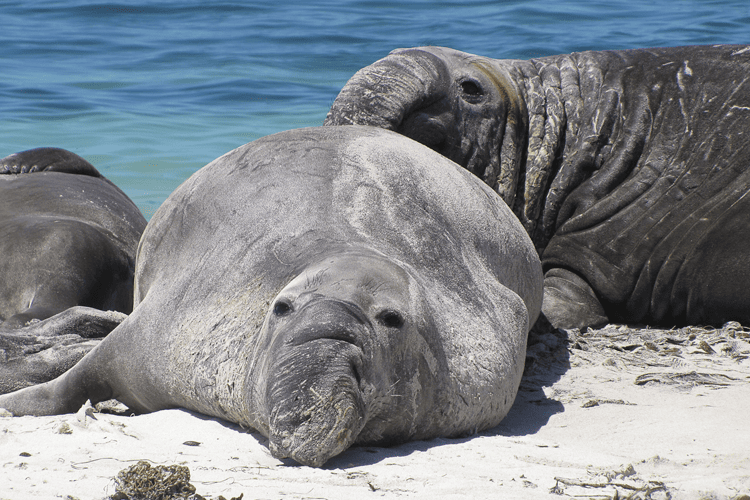
The Elephant Seal
Another marine animal that undergoes a major migration is the Elephant Seal. These marine animals dive to incredibly deep deaths to search for prey. They manage to navigate the dark, deep parts of the Southern Ocean, usually up to 6,000 feet (1,800 meters). They’ll spend an extended period out at sea before they return to their breeding colonies. When they migrate, they go between their foraging grounds and breeding grounds. This allows them to hunt for prey in the deep ocean, where they use increased oxygen storage to keep them alive.
Elephant seals take more risks early on in the migration when they have less body fat. According to author, Roxanne Beltran, “Theory predicts that fat animals take fewer risks, but it’s very difficult to measure body condition continuously in wild animals. Our results show that fat seals prioritize safety, and skinny seals prioritize feeding.” They’re the only mammal known to make two migrations every year. They’ll return to the same beaches every year during the breeding season (Monterey Bay Aquarium).
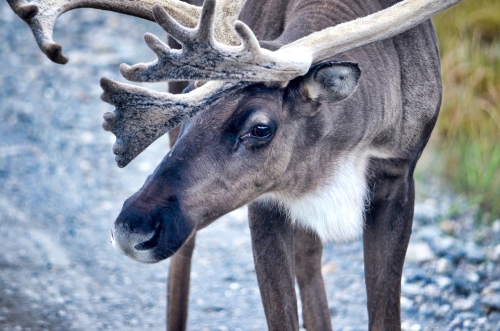
Caribou
Reindeer exist, and they’re known as Caribou in Eurasia. Even though they don’t carry a sleigh when they migrate more than 2,000 miles, it doesn’t mean their journey is any less spectacular. They’ve adapted to life in the Arctic and subarctic region, with annual migrations that are solely driven by the need to find food. They also migrate to ensure the longevity of their species and to avoid predators.
With the longest terrestrial migration routes of any land mammal, they cover thousands of miles between wintering areas based on the availability of food and weather conditions. They have to face the harsh cold, and limited daylight, and navigate difficult terrain (Earth).
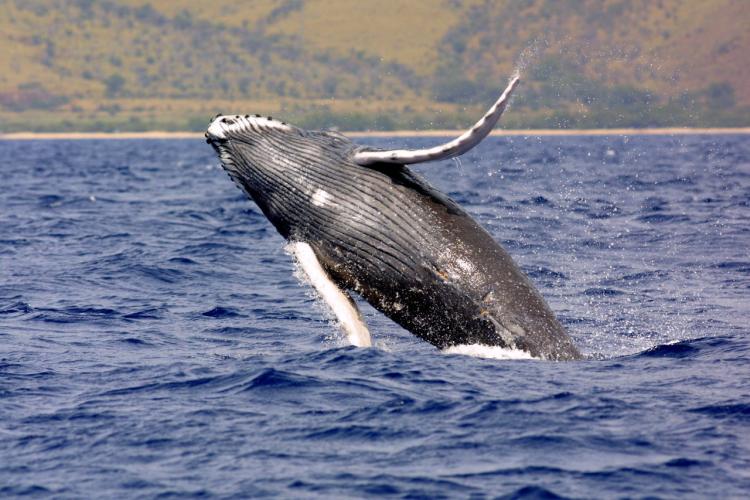
The Humpback Whale
Renowned for its haunting songs and melodies, the humpback whales are adept migrators who make their way across the ocean. They have one of the longest migration routes, spanning across 5,000 miles. They move between feeding grounds in nutrient-rich water and breed in warm, tropical waters. They feed on shrimp-like crustaceans and other smaller fish. One of the most well-known migrations occurs in the North Pacific, where they travel thousands of miles from Alaska to Hawaii or Mexico.
Humpback whales migrate because the calves are born helpless. Warm water provides a more stable environment and protection, where they can mature and learn how to battle the open ocean before returning to Antarctica. During migration, humpback whales will use specific communication tactics like singing and breaching. They’ll also slap their tails, which makes them one of the most entertaining species of whale to watch (Barrier Reef).
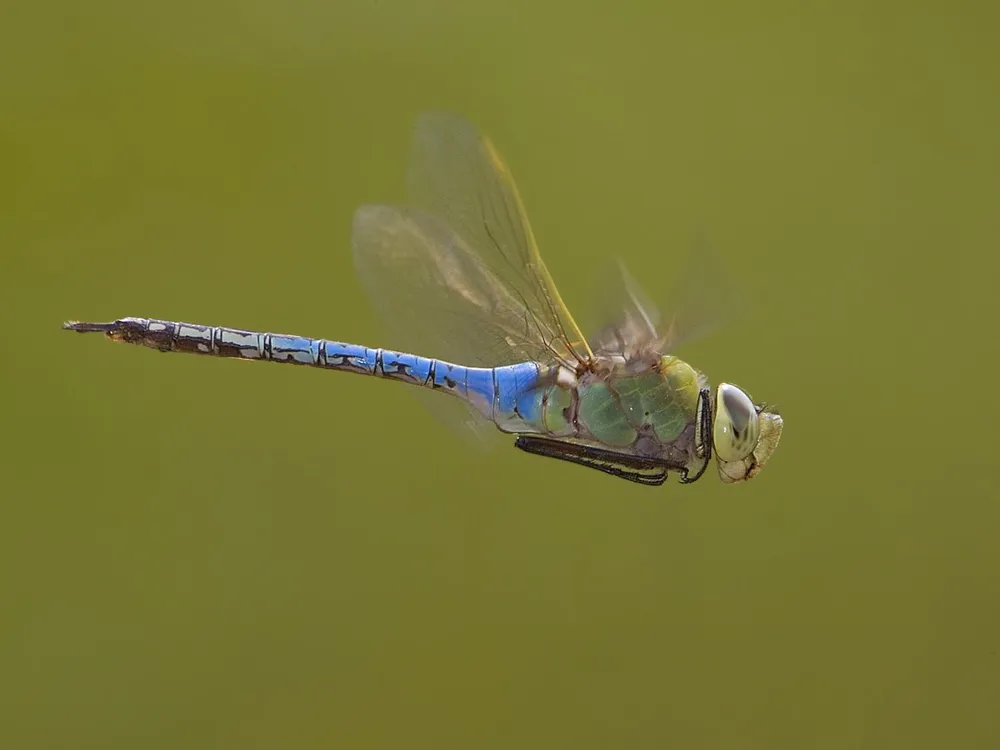
The Dragonfly
Another insect we see traversing across the globe is the dragonfly. It’s also known as the wandering glider and has the longest insect migration in the world. The insect travels across continents and some travel across the ocean. It migrates between Africa, Asia, and North America, and takes advantage of the wind for the best route. Because it travels across the ocean, it faces detrimental weather at times.
It turns out that dragonflies are experiencing a large population crash. Michael Hallworth, who studied the dragonfly migration, said, “With climate change, we could see dragonflies migrating north earlier and staying later in the fall, which could alter their entire biology and life history.” This, in turn, is impacting their migration route (Smithsonian Mag).
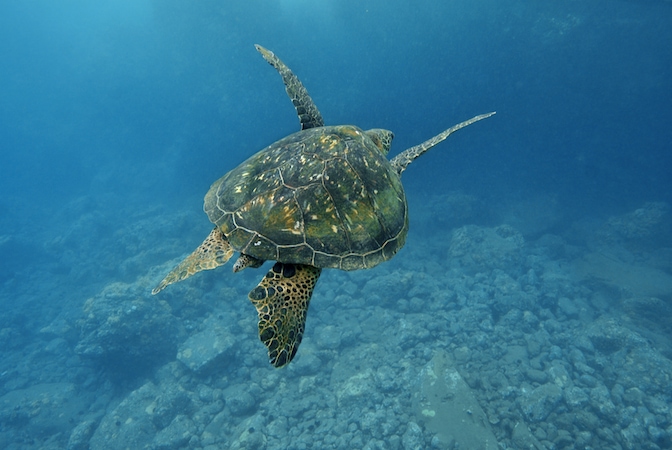
Sea Turtle
The sea turtle travels thousands of miles between their nesting ground and feeding grounds during their migratory periods. The females will return to the beaches where they first hatched to lay their eggs, using environmental cues in the ocean to successfully return to the original spot. We need sea turtles for the survival of our ecosystem, as their movement helps maintain the health of seagrass beds and keeps the nutrient cycling healthy on the beaches. Unfortunately, they face challenges with pollution and climate change.
The adults will migrate every two to five years, from their coastal foraging areas to the waters off of the nesting beaches. They mainly eat algae and seagrass. There are several different species of sea turtles, each of which has their migratory patterns. Leatherback sea turtles will travel up to 10,000 miles in the Atlantic. Loggerheads in Japan will travel about 8,000 miles to Mexico (SEE Turtles).

Bar-headed Goose
Geese migrate over high altitudes over the Himalayas. They navigate through treacherous mountainous terrains between the wintering areas of Insia and their breeding grounds in Central Asia. One mountaineer, Lawrence Swan, recalls his experience seeing the Bar-headed Geese flying overhead, and said, “On one cold and still night in early April, I stood beside the Barun glacier [near Mount Makalu, the fifth highest mountain in the world at 8,463 m above sea level]. Coming from the south, the distant hum became a call. Then, as if from the stars above me, I heard the honking of bar-headed geese.”
The geese can travel these distances because of their mitochondria which provide oxygen and supply energy to their cells. They can reach altitudes of up to 30,000 feet to clear high-altitude mountains. They’re like olympic-sport runners (Science Direct).
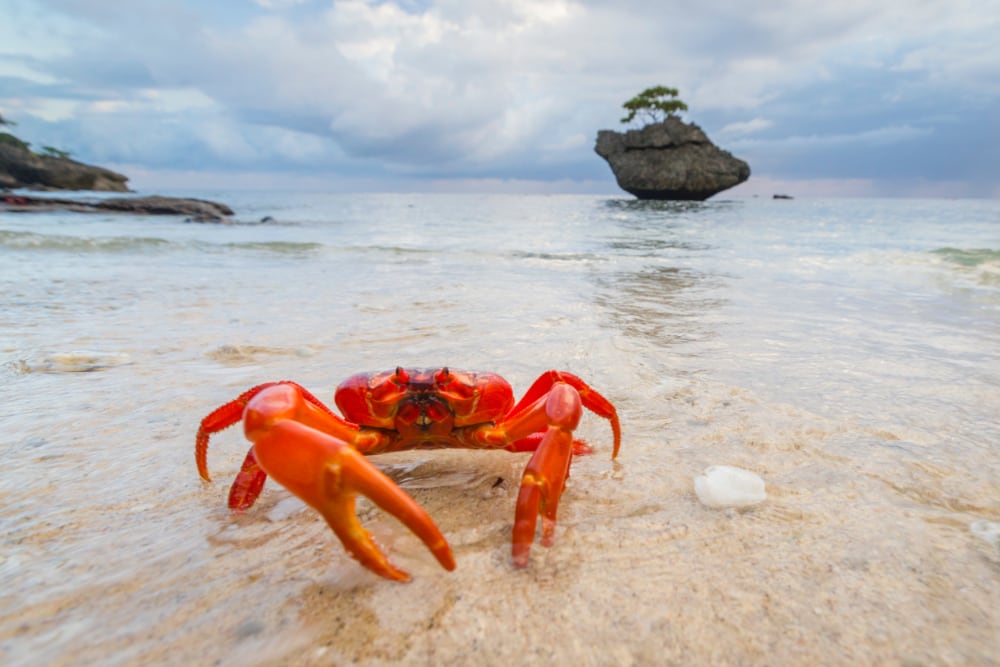
Red Crab
Christmas Island experiences the mass migration of the red crab, which moves from the forest to the ocean to lay their eggs. It’s a visually striking occurrence as these red crabs all make their way across the land. They swarm the rocks, sand, and beaches. The male crabs lead the migration, and the females follow and join along the way.
Park manager Derek Ball, who studies the red crab migration, said, “Over many years we’ve also targeted the red crab’s biggest threat, the invasive yellow crazy ant. By reducing their numbers, the red crab population numbers are higher than we’ve seen in decades which is an outstanding result not only for the red crabs, but for the entire island ecosystem.” The phase of the moon determines the exact timing of the migration since the red crabs always spawn during the last quarter of the moon (Park Australia).
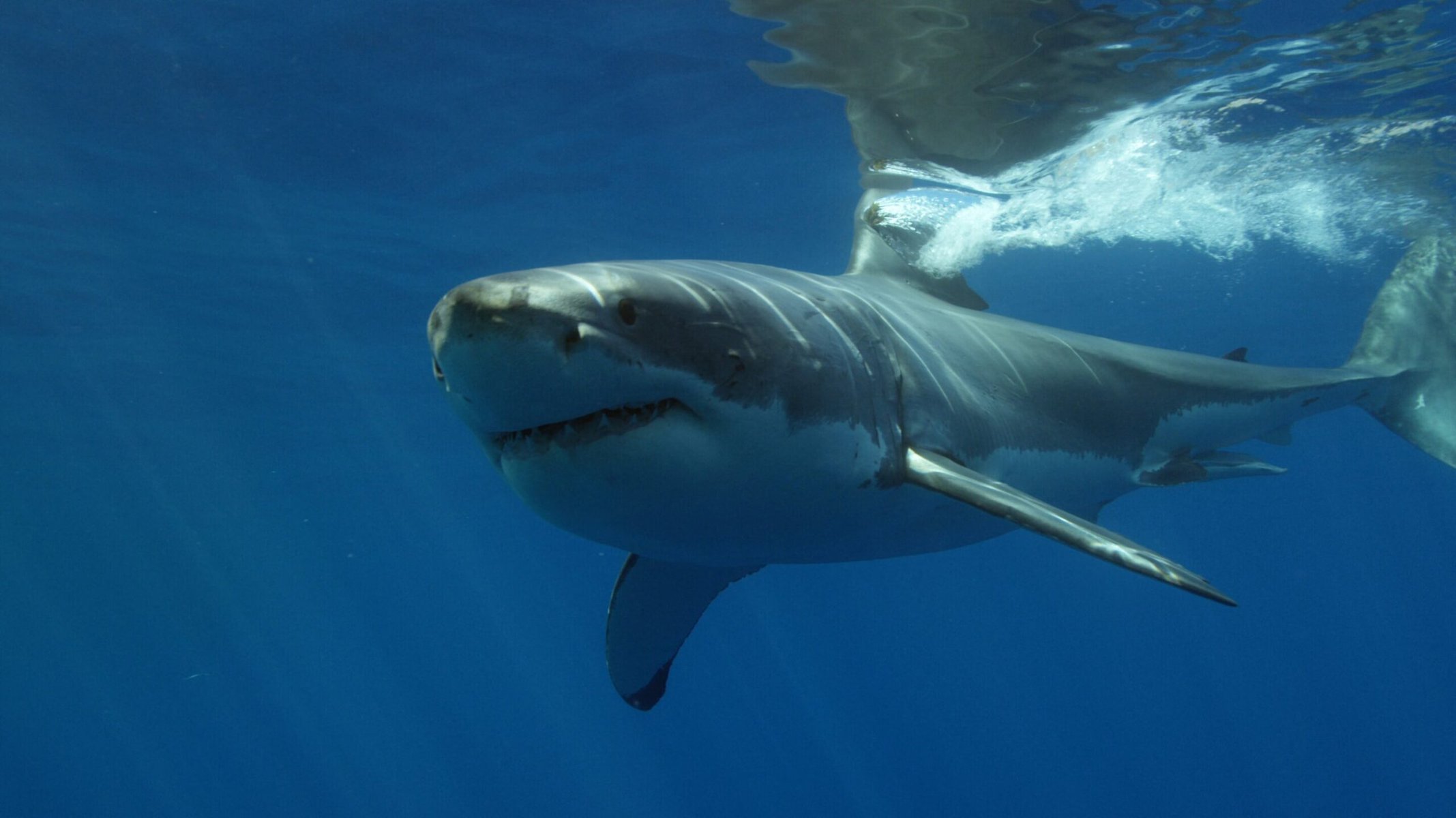
Great White Shark
You wouldn’t want to be caught in the middle of a great white shark migration. They engage in long-distance migrations across vast ocean basins. Some sharks will travel thousands of miles between their breeding and feeding areas. They’re usually found off the coast of California during the summer and fall and then migrate to Hawaii when the water on the Californian coast gets colder.
One baffling fact about this migration is that the sharks usually migrate alone. Researcher Robert Hunter said, “Social behavior in sharks is something that’s not particularly well-known. And it’s not thought to be something that they have much of, except in maybe isolated cases of certain species.” By tracking specific sharks, researchers can make assumptions about the rest of the species, as this one scientist did in particular (Washington Post).
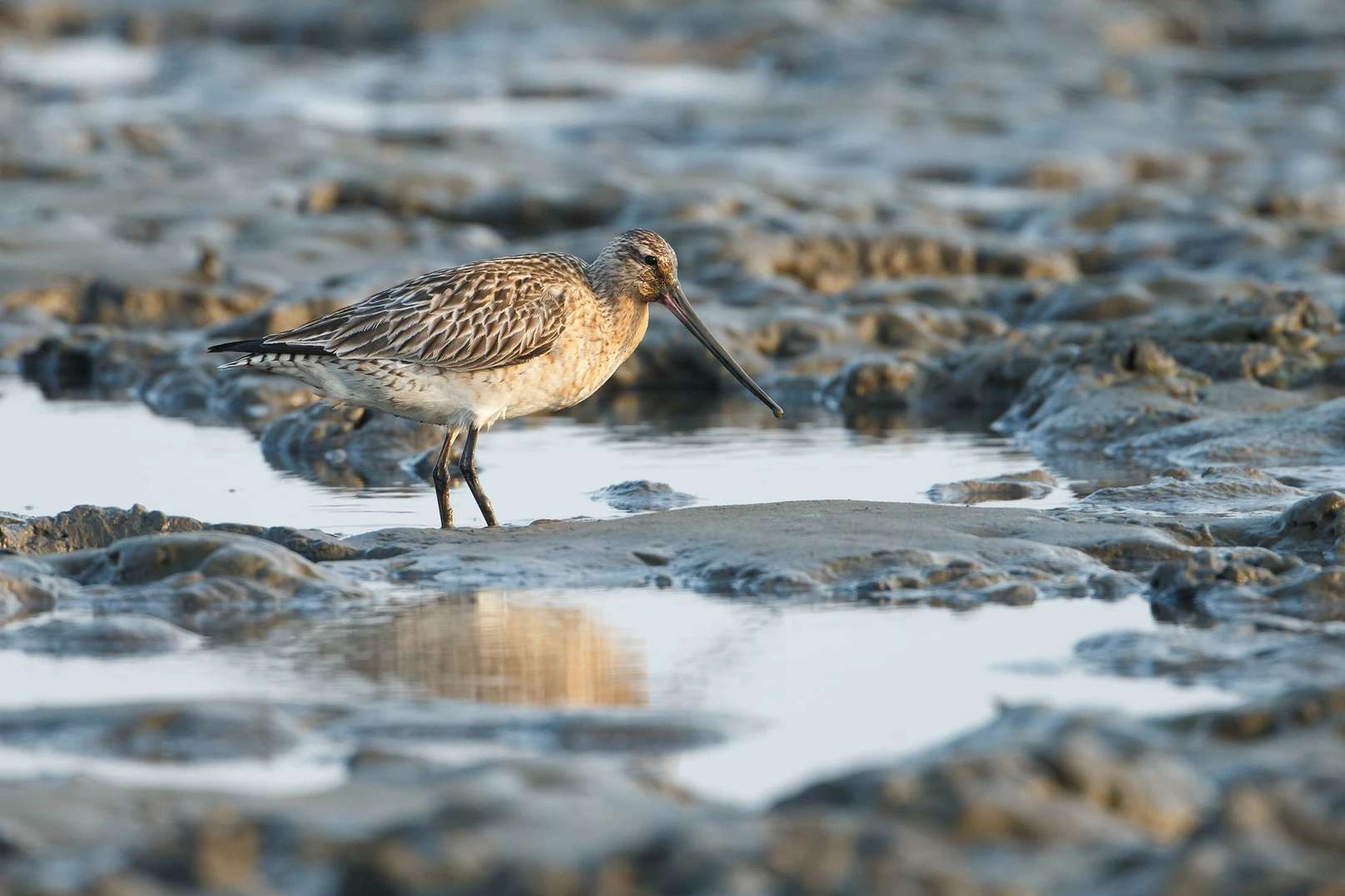
Bar-tailed Godwit
The Bar-tailed Godwit holds the record for having the longest non-stop flight of any bird during its migratory period from Alaska to New Zealand. It covers distances of up to 7,000 miles in a single flight. In just over eight days, they can travel tens of thousands of miles.
Unfortunately, disappearing tidal flats negatively threaten their return journey. Researcher Nils Warnock said, “These godwits are epic migrants. We had a bird, E-7, that we had tagged, and she left New Zealand in the spring. She flies non-stop for seven days, ten thousand kilometers, to the Yellow Sea. All of the Bar-tailed Godwits of Alaska, they stop at the Yellow Sea.” The health of the Yellow Sea is utterly important for the longevity of this species (Audubon).
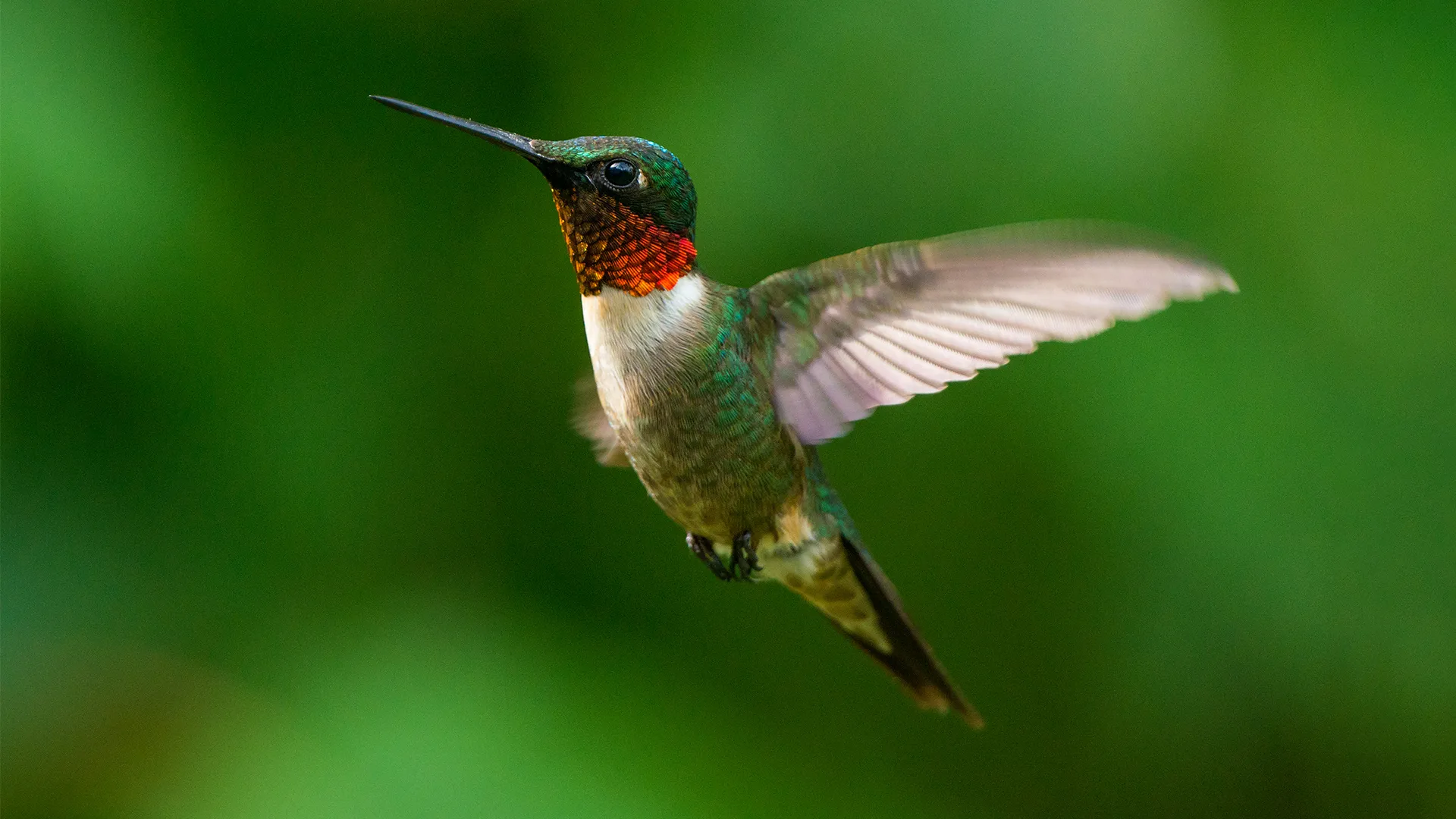
Ruby-throated Hummingbird
During an impressive non-stop flight across the Gulf of Mexico, the Ruby-throated Hummingbird migrates from North America to Central America. In about 18 hours, it covers about 500 miles in distance as they cross the Gulf of Mexico. They do not make any stops during this time. It’s like they’re taking an international flight!
They fly during the day and rest at night, and as they come across longer daylight hours, they encounter more food sources. They need to eat as much as possible, so they have enough energy to continue onwards with their migration journey. Once they reach their destination, they’ll give birth and fatten up their young until they make the return journey in the fall (Perky Pet).
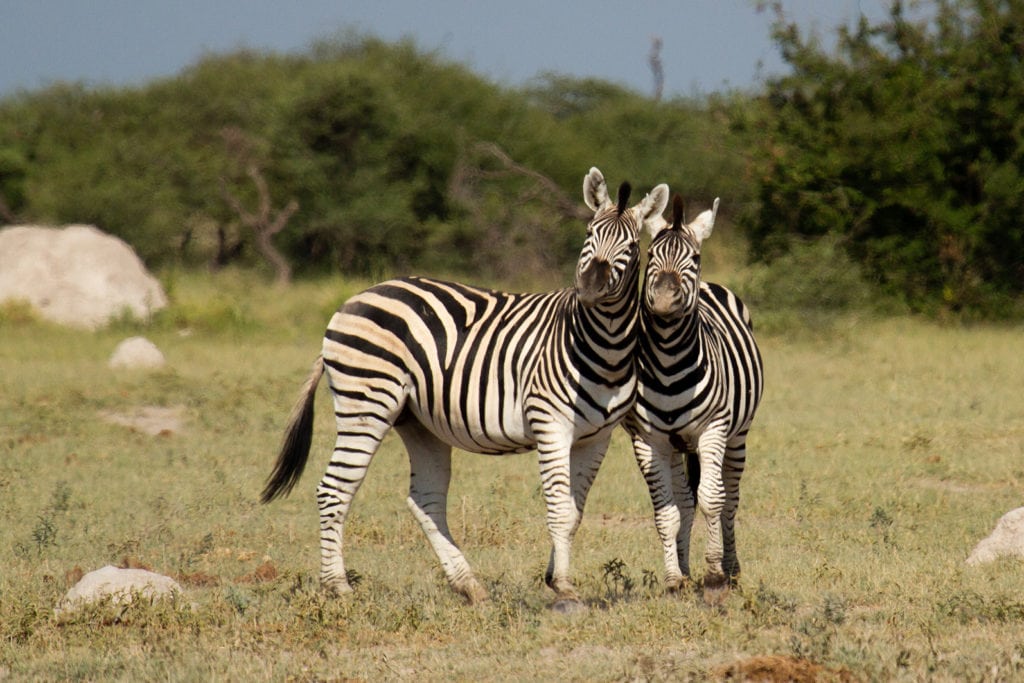
Zebra Migration
In Botswana, zebras migrate across the African continent, specifically in Tanzania and Kenya. They search for water sources and greener pastures. They do this at the same time as the wildebeest migration, which is also referred to as the Great Migration. Changing seasons drive this movement, as does the availability of food and water. The trek is challenging, as the zebras come into contact with rivers, Savannah, and predators.
Typically, this occurs between May and October. Rainfall and the availability of resources can impact the exact route of the zebra’s migration. To increase their chances of survival and safety, they oftentimes migrate in large numbers (African Bush Camps).
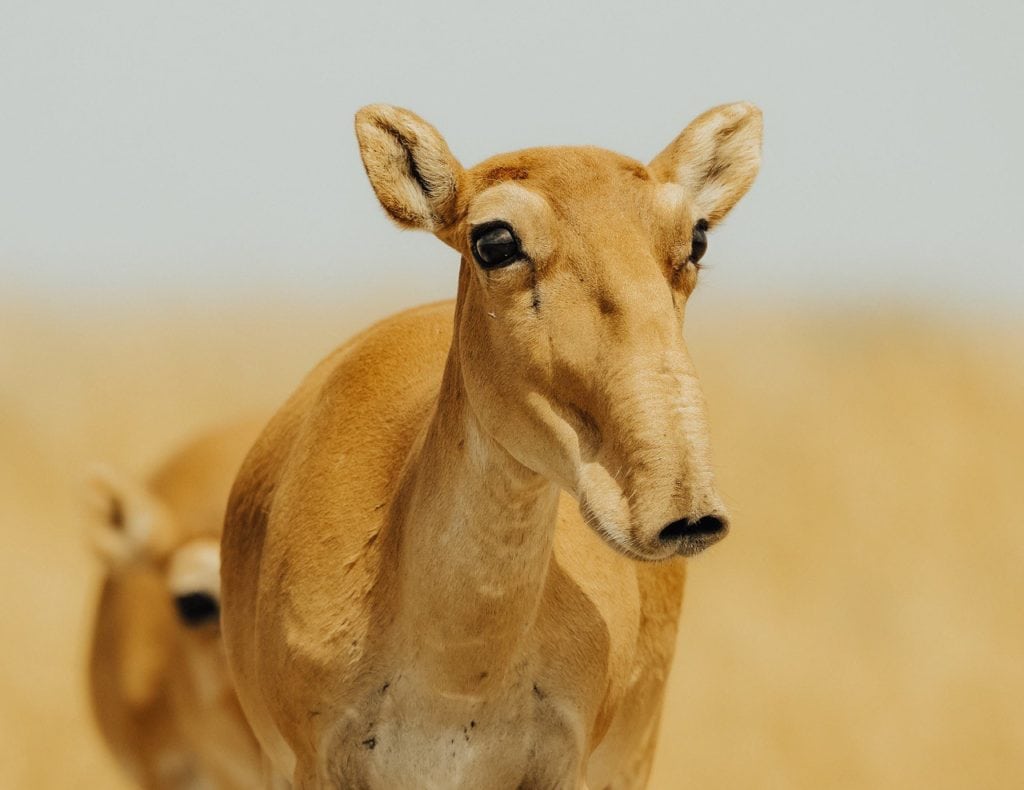
Pronghorn Antelope Migration
Hundreds of Pronghorn Antelope migrate between their summer habitats in Grand Teton National Park to Green River Valley in Wyoming. They’ll run at a top speed of 55 miles per hour. This 200-mile migration route is the longest land migration in the lower 48 states. They need to cross water, traverse rough terrain, and cross bottlenecks, where humans exist.
Another breed of antelope, the saiga antelope, migrates in Central Asia in large herds to find grazing grounds, following a north-south direction. Unfortunately, these antelope undergo poaching. According to researcher, Munib Khanyari, “I think poaching is not nearly at the levels reached after the collapse of the Soviet Union. Right after [that] people almost overnight lost institutional support to rear livestock, and started to kill saiga for meat and also males for their horns. Selectively harvesting males [females don’t have horns] led to population crashes, as saiga is a harem breeding species [one male mate with several females].” Fortunately, there was recently a mass breeding report in Kyrgyzstan, which means their species might increase yet again (China Dialogue).
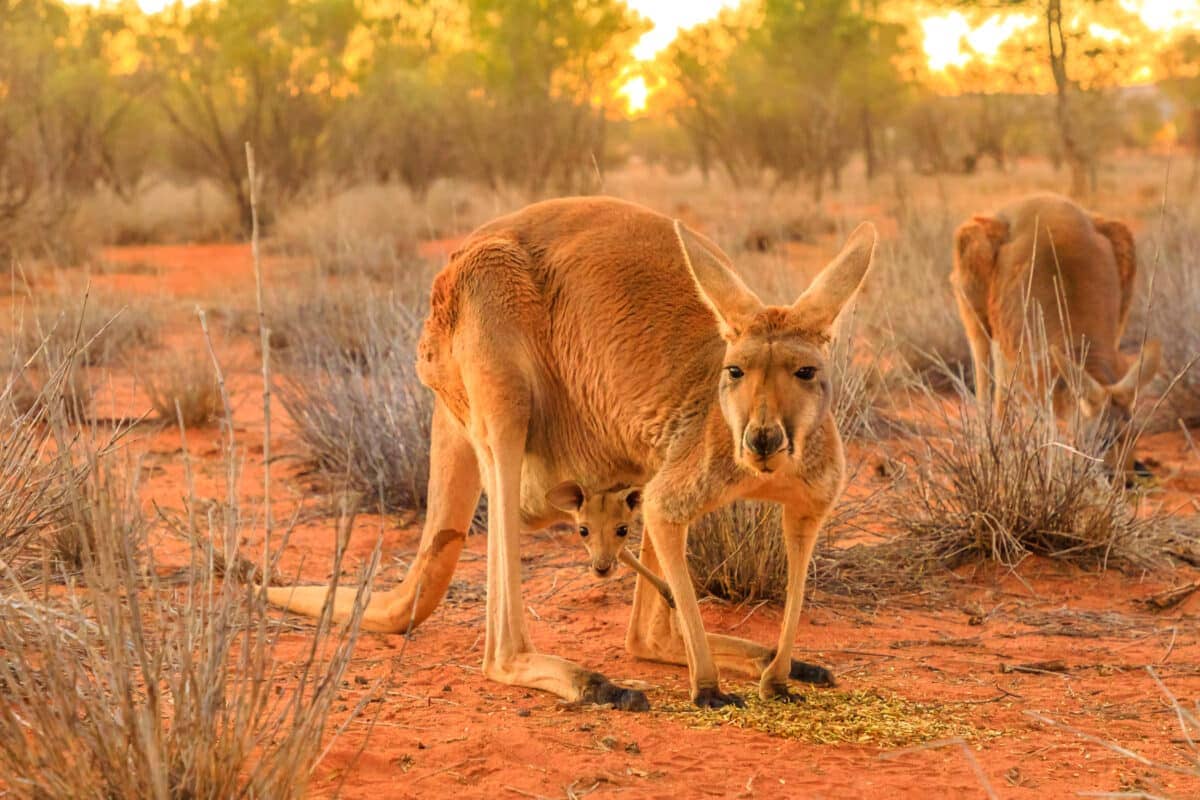
Kangaroo Migration
One of the most fascinating natural phenomena in Australia is the red kangaroo migration. These kangaroos may travel long distances to search for food and water. As the largest marsupial on the planet, it’s able to travel long distances during the dry season, when it lacks food and water sources. The red kangaroo travels across the outback, while the gray kangaroo travels around a smaller area.
During this time, they’re more vulnerable to predators like humans and dingoes. Unfortunately, as climate changes, this could negatively impact the migration patterns of the kangaroo, as they search for water and food (Faster Capital).
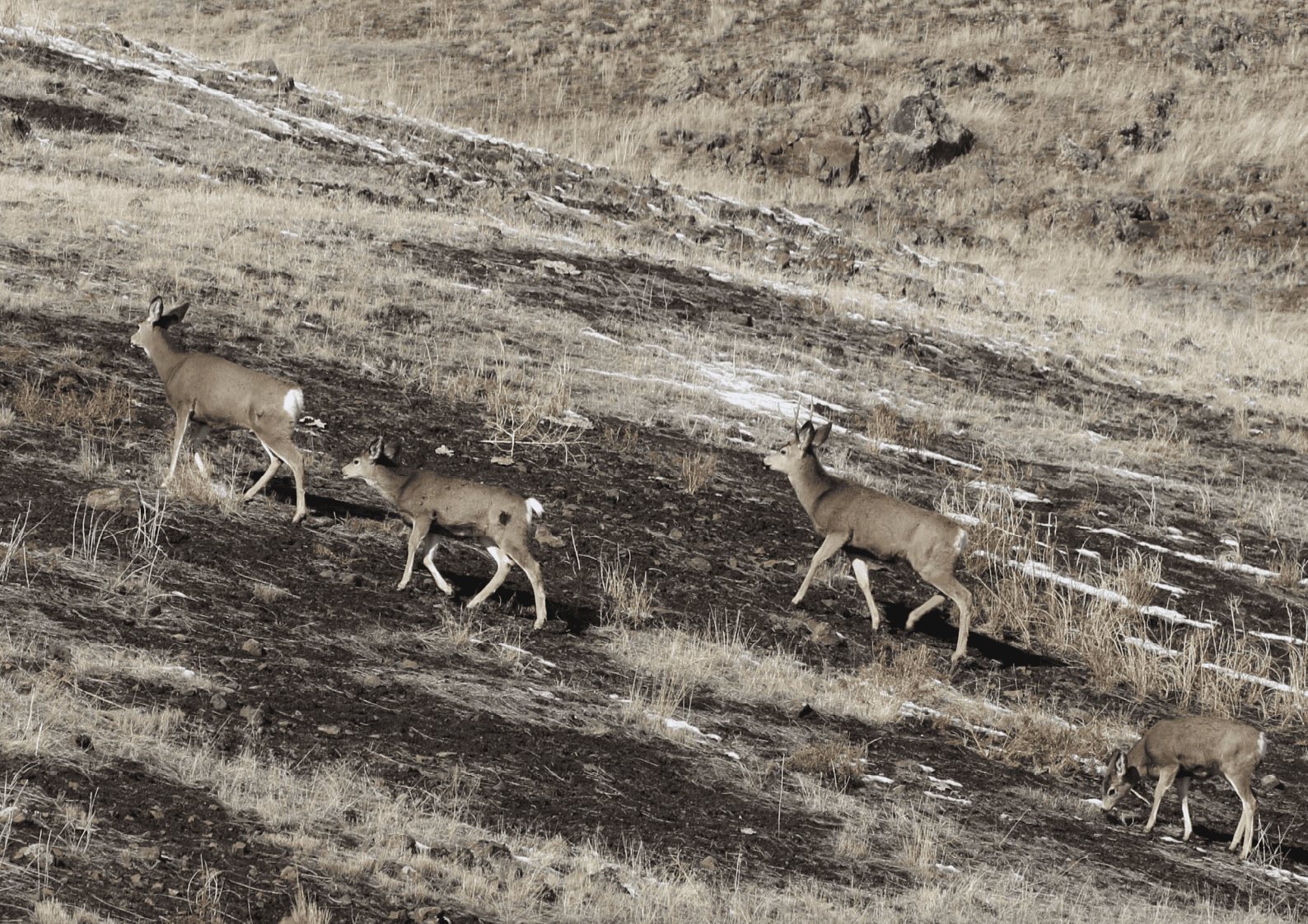
Mule Deer Migration
Mule deer migrate seasonally, moving between higher and lower elevations. They migrate to take advantage of rich vegetation, where they follow the growth of young, nutritional plants and escape the dry summer heat. These deer travel 480 miles round trip.
According to the Oregon Department of Fish and Wildlife, “Across Oregon, more than 60% of mule deer migrate. Along the east slope of the Cascade mountains, where topography and seasonal climate changes are more extreme, upwards of 98% of mule deer are migratory. Migration confers numerous benefits, including better survival. Here in Oregon, migratory deer have been found to have a 6% higher annual survival rate compared to residents.” Different herds migrate in varying ways (DFW).
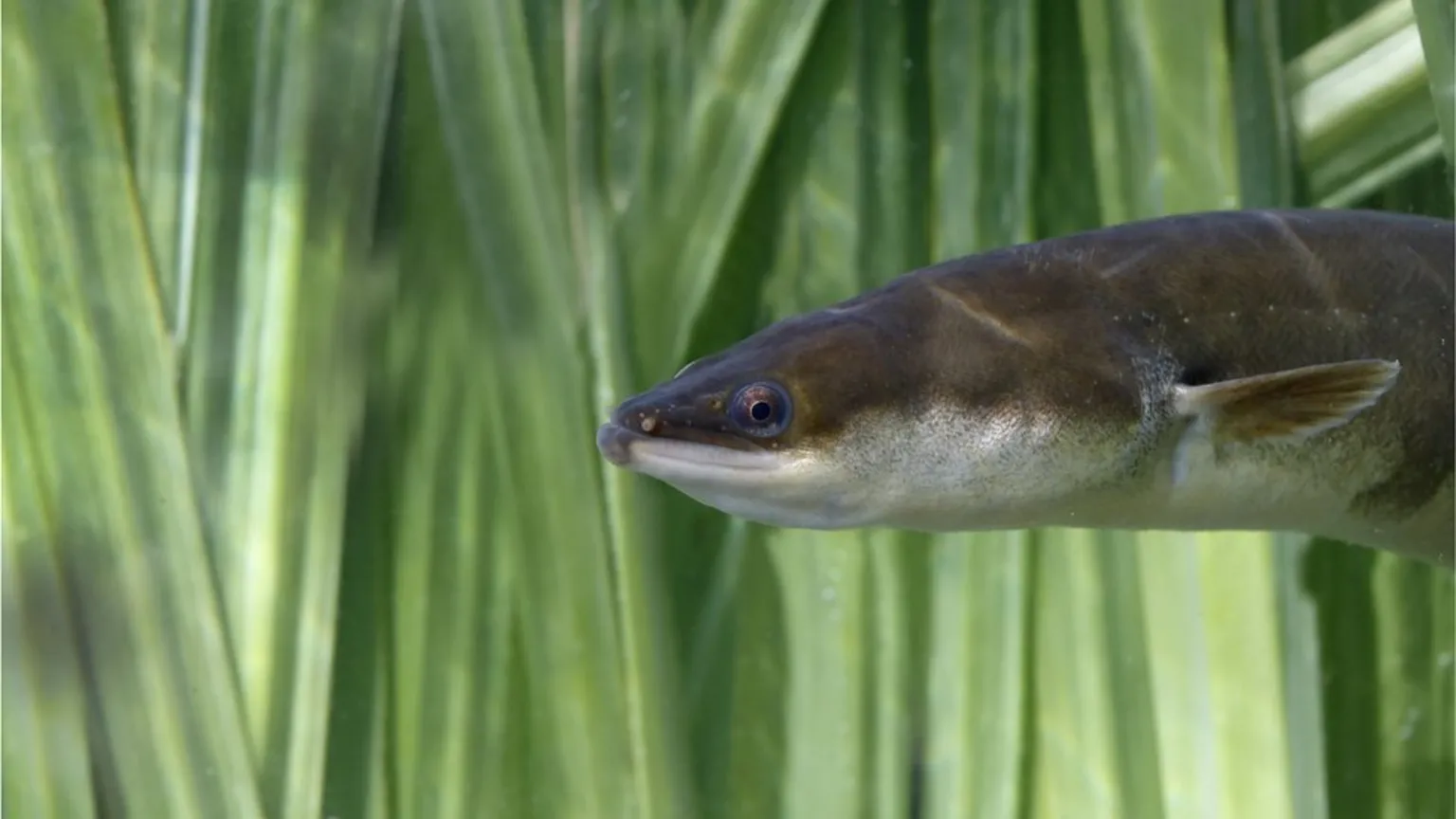
Eel Migration
One of nature’s most incredible journeys is the eel migration. Eels travel thousands of miles from freshwater to the Sargasso Sea to spawn. They leave the European rivers to travel to the North Atlantic to breed for one single time before they die.
According to researcher, Ros Wright, who is studying the endangered species, “This is the first time we’ve been able to track eels to the Sargasso Sea and we are delighted we have the first direct evidence of adult European eels reaching their spawning area. Their journey will reveal information about eel migration that has never been known before.” Ocean currents and climate change are negatively impacting the eel’s lives, where there’s been a drastic decline in the past 20 years (BBC).
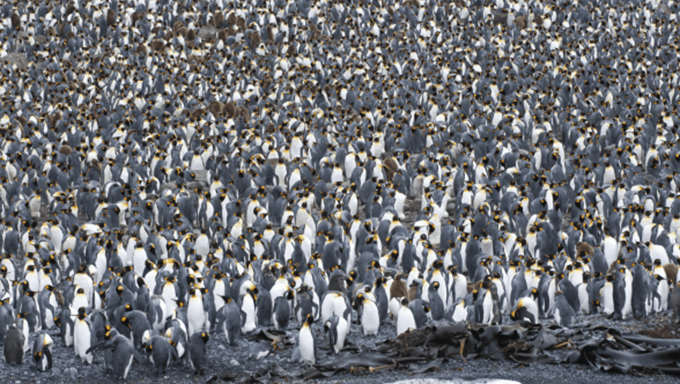
Penguin Migration
Emperor penguins make yearly migrations inland to breeding sites every spring. At the beginning of summer, the penguins will return to the sea and spend the rest of their summer feeding there. They might be spotted up to 56 miles inland during the breeding season. They’ll migrate a total of 100 miles from their original spot.
The females will lay their eggs, and then make an arduous journey and return to the sea, while the males stay through the dark, harsh winter with the eggs. When the eggs hatch, the females will once again migrate to feed their new chicks and the males head back out to sea (Explorations Company).
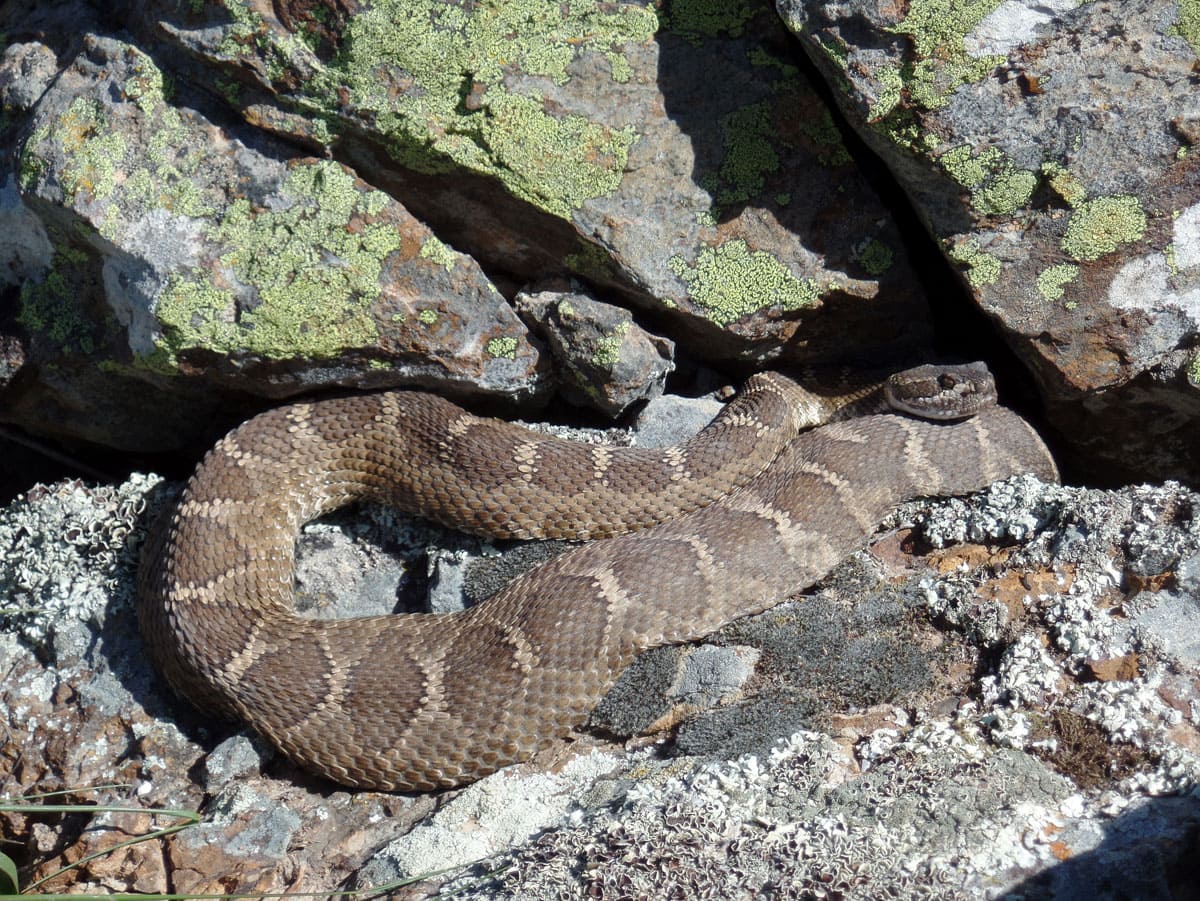
Timber Rattlesnakes
During the winter, rattlesnakes will spend their days hibernating in their den. They then migrate up to five miles to their summer ranges and return when the winter comes back around. These trips are treacherous for the snakes, who need to fend off starvation, evade predators, and navigate through human developments that may have altered their route.
Oftentimes, humans will kill these snakes out of fear. Once the snakes reach their summer ranges, they will find mates. Unfortunately, rattlesnakes are critically endangered. They’re the most vulnerable while they’re hibernating (Animals).
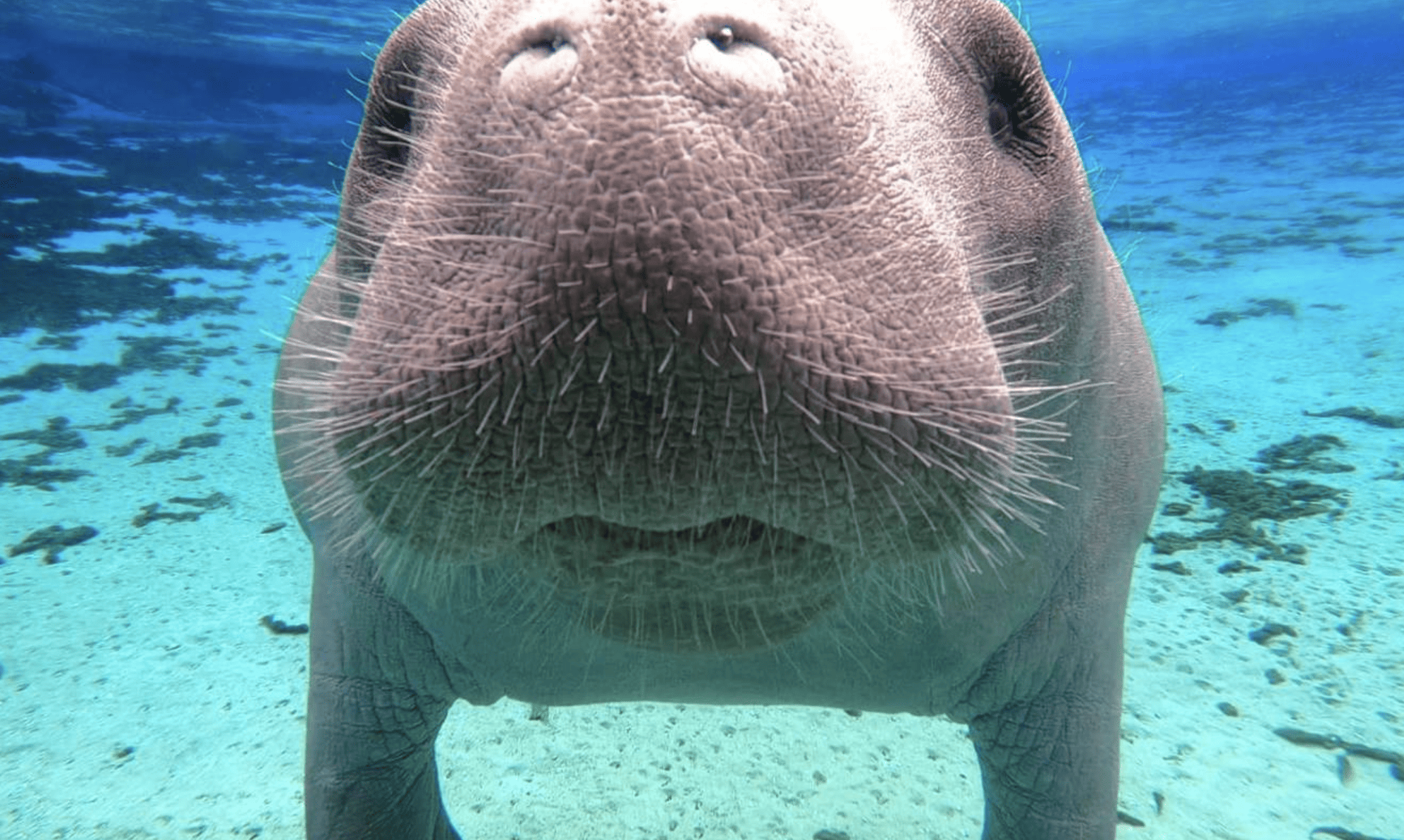
Manatee Migration
In the wintertime, manatees are concentrated in Florida, in warmer waters. West Indian manatees migrate to warmer waters during the winter. They can be seen along the eastern coastline of Georgia, the Carolinas, and Massachusetts during the warmer months. Occasionally, they’re spotted as far away as Texas.
The warm water sites they migrate to include artesian springs and power plant discharge canals. The warm Florida waters during the winter months are important for their longevity and survival, helping them to find food (My FWC).
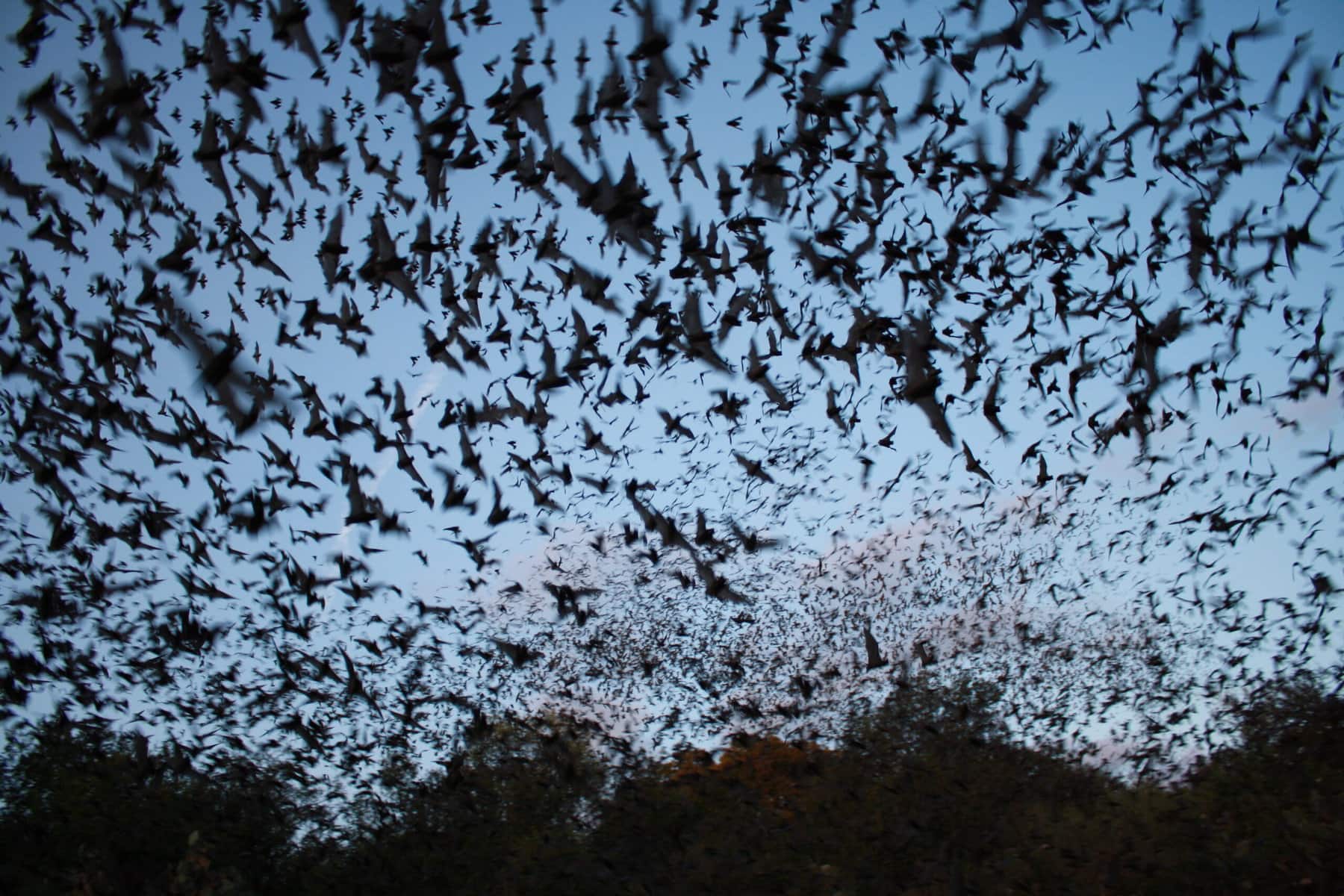
Bat
When faced with colder weather, bats must choose to either rest and hibernate or move to warmer weather with more abundant food supplies. There are bat species that hibernate, bat species that migrate, and bat species that do both. When they migrate, they’ll move between summer and winter habitats.
Hoary bats will roost in trees, but migrate south when there are fewer insects during the winter months. Other bats will migrate to find a habitat to hibernate in. Those in southern Canada will migrate to the caves of New York to hibernate during the winter months (DEM).
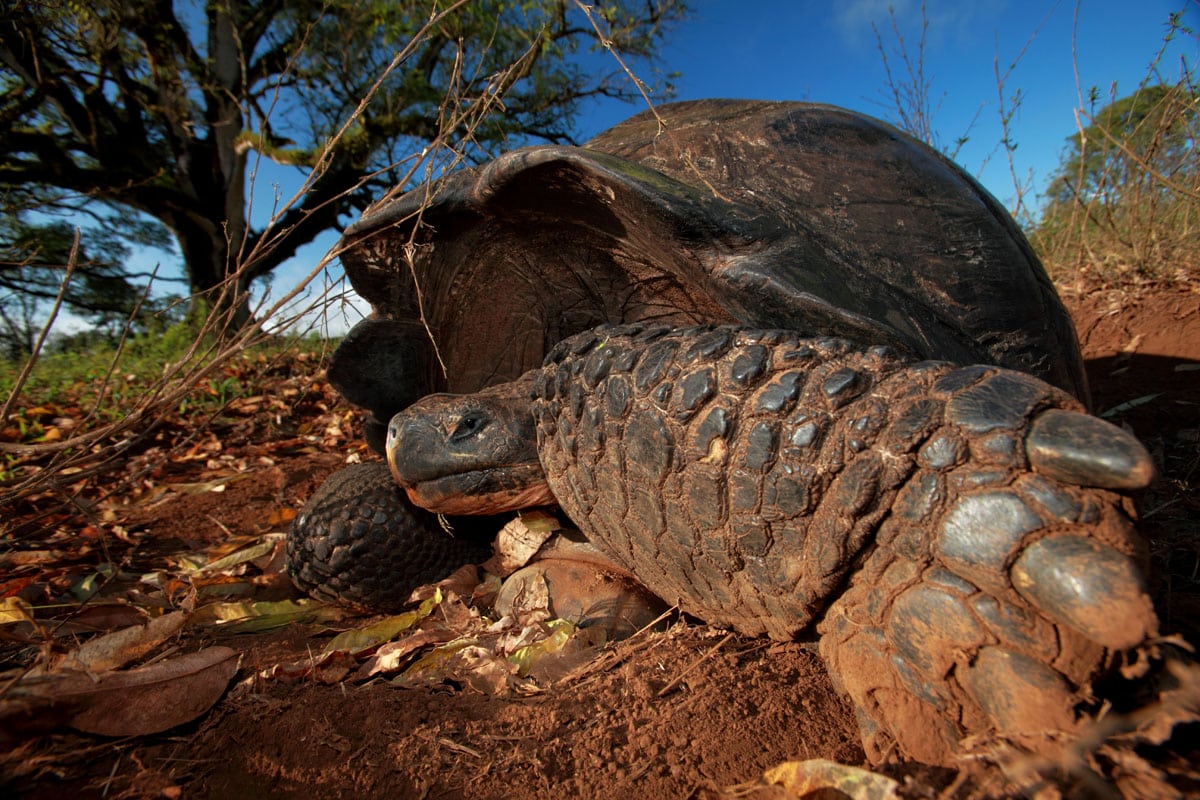
Galapagos Tortoise
The Galapagos Tortoise experiences a typical migration, it’s just on a much smaller scale. Researcher and explorer Stephen Blake studied 18 tortoises and conducted monthly surveys. According to National Geographic, “The tortoises’ journey begins in the humid highlands of Santa Cruz Island, where they load up on grass and perennial plants. Once the rainy season starts in December, they migrate to the lowlands, where herbs and shrubs thrive.”
Researchers are only really starting to figure out why this is the pattern of the Galapagos Tortoise. The article went on to say, “Come June or July, when the rains stop and the vegetation dries up, they return to the highlands. Although adult males and some females make the trek,” and other tortoises choose to hunker down (National Geographic).
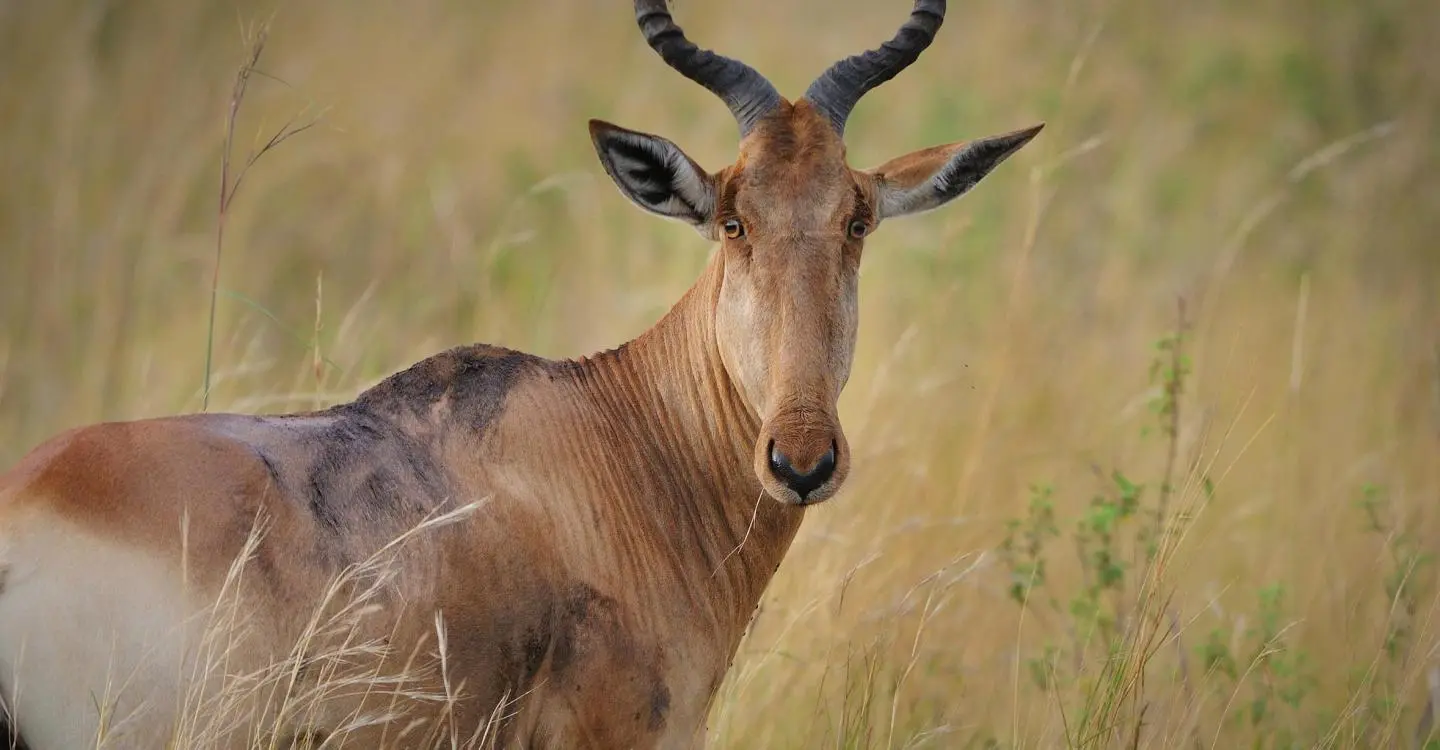
Topi
These medium-sized antelopes migrate every fall on the South Sudan. They’re normally pale yellow and brown, and they turn into a viridescent shade during the migration. This change in color helps them migrate, as millions of them travel across the lowlands around the White Nile. This is different than other antelope migrations.
According to Atlas Obscura, “Topi are an extroverted species that have been known to socialize with animals beyond their species, like wildebeests, zebras, and even ostriches. They are notoriously picky eaters: the topi only grazes on grass and can go without water for long periods, so long as the grass is fresh and well-hydrated. Perhaps weirdest of all, female topis can delay birth if they sense they’re in danger.” The Sudd wetland is currently on the UNESCO World Heritage Site. This is where the Topi migrate (Atlas Obscura).
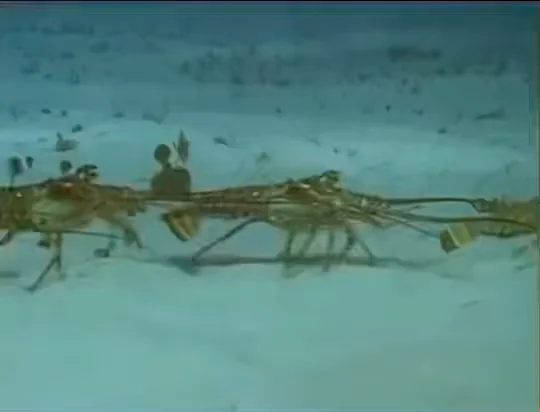
Spiny Lobsters
These lobsters are found across the Caribbean. They have a completely unusual migration across the sea. At the beginning of summer, they line up into something resembling a conga line of up to 50 individuals and march offshore into deeper water. They must avoid the summer storms. Females help protect their eggs by moving into cooler water.
By the time autumn comes around, the lobsters move into shallow waters to breed yet again. Scientists believe these conga lines help protect them against predators. To avoid predators during the daylight hours, they’ll stay in their dens. They mostly eat snails, crabs, urchins, and clams (My FWC).
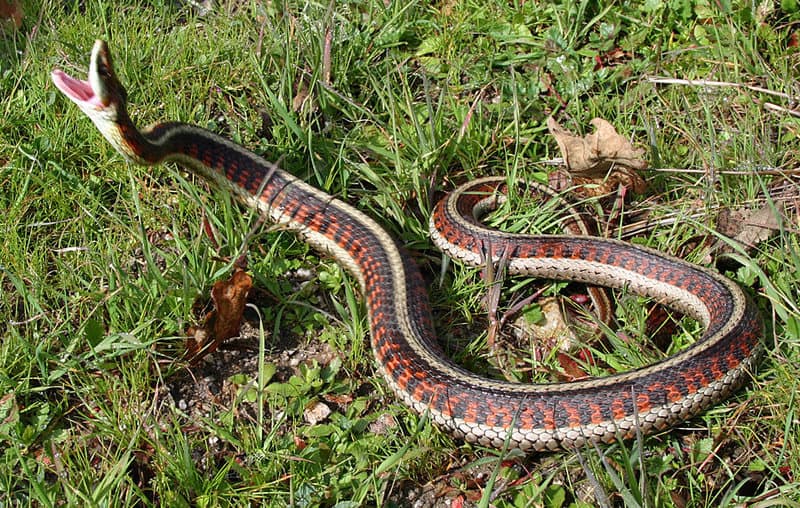
Red-sided Garter Snakes
At the end of Autumn, these snakes travel up to 20 miles to hibernate all together in Canada. It’s noted as the largest snake gathering in the world. If you’re afraid of snakes, this is not the place you’d want to find yourself! Once springtime rolls around, over 100,000 reptiles emerge from these dens at the same time.
At one time, in the den in Canada, over 8,000 snakes were recorded in the same spot. They hibernate all together during winter to preserve their body heat and keep themselves protected against predators. Year after year, they’ll return to the same den (Wilderness Classroom).

